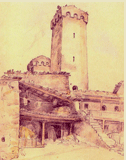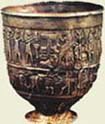Cultural Anthropology
Scholars and students, familiar with the Georgian language, will agree that there are countless historical records and ethnographic and anthropologocal works, which are invaluable sources to study and understand the Caucasus. Georgia with its historical-ethnographic provinces (Kartli, Kakheti, Meskheti, Javakheti, Trialeti, Khevi, Tusheti, Pshavi, Khevsureti, Mtiuleti, Gudamak'ari, Imereti, Ajara, Guria, Samegrelo, Samurzak'ano, Abkhazeti, Svaneti, Racha, Lechkhumi) is a unique place, where tradition and modernity closely cohabit together (view the slide shows).
Georg ia's highland provinces are particularly interesting from the perspective of studying the most ancient rituals as well as the non-written Kartvelian languages -- Megrelian and Svan. Archaic forms of the religious beliefs and practices are evident in the traditional funerary ceremonies and customs, purification and animal sacrificial rituals, and the mythological beliefs and folklore of the Georgian highlanders.
ia's highland provinces are particularly interesting from the perspective of studying the most ancient rituals as well as the non-written Kartvelian languages -- Megrelian and Svan. Archaic forms of the religious beliefs and practices are evident in the traditional funerary ceremonies and customs, purification and animal sacrificial rituals, and the mythological beliefs and folklore of the Georgian highlanders.
There are many interesting scholarly works in Georgian in the fields of anthropology,ethnography, and folklore about traditional cultures of the peoples of the Caucasus. To learn more about the anthropology and folkore of the region visit the photo exhibit, and view the publication Ethnography and Folklore of the Georgia-Chechnya Border: Images, Customs, Myths & Folk Tales of the Peripheries, Munich: Lincom Europa, 2008.
Additional Information: 
- Ethnography and Folklore of Georgia: Suggested Readings
- Georgian Folklore Course Description and Syllabus
- Visual Anthropology Photo Exhibit | Slide Shows
- Other Resources (in the Publications page)








